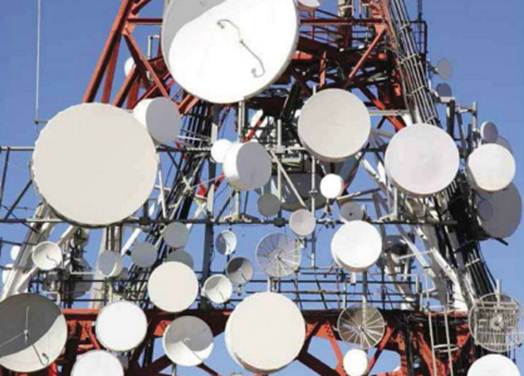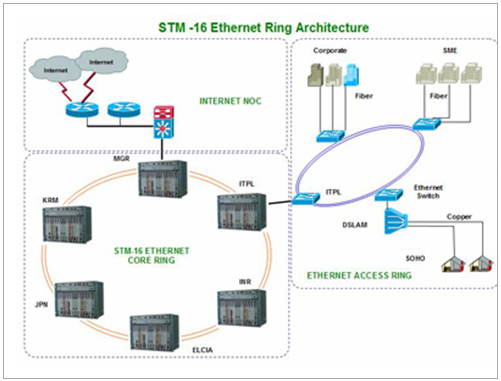Steve Cassidy on the problems with
the perceived threat of electrosmog, and more practical uses for plastic
optical fibre
If only Robert Heinlein had known about
electrosmog. His early short story Waldo mixed together a number of themes
based around human credulity, incomprehension and action at a distance, as an
amusing warning about the way snake-oil salesmen baffle people who should know
better. It depicted a society only too keen to grab the advertised present
benefits of a heedless march into the future. Waldo paints a society in which
nuclear power hasn’t only been harnessed but can be broadcast wirelessly into
home or car - that is, until something starts to interfere with the
transmissions and threatens the whole economy.

Steve
Cassidy: Steve mixes network technologies with human resources consultancy
work.
In our own world, the issue of excessive
electromagnetic radiation has become fodder for a large movement of folk who,
to be charitable, are easily confused by the difference between the
philosophical and the actual. Whenever someone discusses “the impact on our
lives of the advance of technology”, these folk think not in terms of rarefied
intellectual abstractions, but instead begin to fret about shortened life
spans, weird illnesses and picking up radio shows via the fillings in their
teeth.
In his day, Heinlein had a great talent for
looking forward to completely different futures, but Waldo doesn’t look as
improbable as it did back then. Unfortunately, current speculative fiction
seems to have been captured by moralists who value being right above the truths
via which they support their opinions. In place of well-crafted allegories
about heroes, nowadays we get semi-psychotic blogs, penned by terrified
ingénues who are unsure whether their perpetual malaise is caused by their
toaster, phone, games console, or aliens from Venus - although it never seems
to inhibit their ability to type...
The particular creative mix-up of fiction,
fear, futurism and faith that caused me to boggle earlier this summer was, as
in Waldo, a mixture of real technological developments with imagined
threats and advantages. I’m talking about the application of plastic optical
fibre as an antidote to the perceived threat of electrosmog in the home (and my
problem is that I burst into a fit of the giggles every time I write or think
that sentence).

Snake-Oil
solutions for electrosmog
In fact, it was an electrician who drew my
attention to a German retailer (which I shan’t be naming for legal reasons)
with a proposed solution to such electrosmog for a client high up in the Alps.
I’ve yet to translate all the site’s nooks and crannies to my own satisfaction,
because asking Swiss friends to help risks them being incapacitated by giggles
too (and at me rather than with me). I believe its message
crosses the language barrier clearly enough: installing a plastic optical fibre
distribution system (POF from here on) is a good cure for the ills created by
electrosmog, and it’s available from all good electrical outlets today!
Sometimes, ironically sneering in the face
of hucksterism risks leaving behind exactly those people who should listen, so
if all you smart-aleck hipsters excuse me, I’ll get more literal - there’s no
actual law of physics that states websites containing pictures of happy people
with up-stuck thumbs has to be selling products that will make you happy. It
may just be that the vendors genuinely believe they have a happy-maker on their
hands, if only the world could shut up and listen. But after that interlude of
sincerity, I’m duty bound to act as party pooper by taking their claims to
pieces.
So leaving aside all its smiley slogans,
what this German company is selling is a household LAN distribution network
built from multifunction powered wall plates, the aforementioned POF cabling
and a central POF-capable network switch. These wall plates are mostly depicted
sitting in a multiservice outlet beside a mains socket, and they deliver three
standard RJ-45 connector network points, plus an optional small Wi-Fi base
station, all controlled by a master power switch and a Wi-Fi signal strength
selector. The cabling infrastructure proposed is the aforementioned POF.
If you make an online investigation of the
general topic of using plastic instead of glass for optical fibre networks,
you’ll encounter a lot of pretty decent, learned discussions. The basic problem
is that, while fibre has had a lot going for it for a very long time, it simply
hasn’t gained the kind of traction that it should. But messing about with bendy
plastic rods strikes us hardened fibre gurus as comical: we’re used to stuff
that can whack those photonic Solitons down a 70km waveguide! Even our jargon
sounds cool! Herein lies the gap within which all this electrosmog nonsense is
incubated.

optical
fibre networks
Since old-school fibre is hard to work with
and confusing to specify, while copper cable remains manifestly and obviously
electrical, there’s a temptation for those who are phobic about electromagnetic
stuff to accept the basic idea that plastic cable equates to no electrosmog.
Let’s run with that proposal for a second: having a power switch right on the
wall plate is, no question about it, going to let you take control of the EMF
emissions in your room. Turning it off should mean zero electromagnetic
emissions, a victory for those misguided, neurotic but empathic mums who worry
about frazzling their off springs’ brains in the nursery, or about what’s
happening to their houseplants in the living room overnight. I made the first
one up, but the second came from an article on electrosmog in The
Independent in 2006...
There’s nothing special that would require
POF to be employed to achieve the effect of turning off at the wall socket. It
would be trivial to do the same thing with copper wire, and with exactly the
same effect. Also consider with either copper or POF what it is you’re doing
when you hit that button. These little room-resident boxes contain a power
supply that piggybacks off something, most likely the nearest mains socket.
This means they’re connected to a 220V AC circuit, that they probably shrink
those volts (most likely down to 12V) by way of some kind of transformer, and
that there’s no immediate way to tell whether the switch you flip is positioned
on the 220V side or the low voltage side.
The worst case from an electrosmog
viewpoint is actually safer for any device that emerges into a domestic room -
let’s assume the 220V transformer stays running in an unloaded state all the
time those lights on the front of the box are off. So here’s a thought
experiment for any reader who either believes or wants to understand the
electrosmog credo: is the alleged electromagnetic pollution of said domestic
room decreased because tiny, intertwined and mutually cancelling lines
of EMF from copper CATS cable inside the wall have been eliminated by the use
of POF, or is it increased because an open 220-to-12V transformer
without any matching load is merrily radiating EMF from it’ s teeny weeny
windings hidden away behind that wall plate? Please, oh faithful, enlighten me,
because I’m not convinced that you’re not all entirely barking mad.
What I see is a form of diagnosis and
presentation that delivers a plausible bottle of snake oil, a rationale for
making safety decisions built around the actual design of this completely
incomprehensible bit of kit. I don’t claim, incidentally, to be a fully
qualified electrical engineer. I’m well versed in basics such as watts = amps x
volts (way ahead of many of my clients, which still have trouble figuring out
why their server room is hot, or why that extension lead has melted). I’m also
deeply intrigued by the way such basic electronics can lead you straight into
the more dizzying aspects of quantum trickery without warning - the problem of
the charge of the whole universe when viewed from the perspective of a single,
freely moving electron was knotty enough to lead an undergraduate Richard
Feynman to glory. But, even based on my strictly empirical understanding of
electricity, it appears foolish to focus one’s fears of electrosmog onto copper
LAN cabling.